Laboratory Test:
The laboratory test is based on the international standard DIN EN 12983-1 and the laboratory's internal method ITS-M0121 and includes the following stages.
A. Technical documentation
B. Coating's wear resistance
C. Non-stick properties with pancakes
D. Non-stick properties with 3.5% milk
E. Base stability during rapid temperature changes
F. General assessment of construction quality
G. Heat distribution (melted sugar)
H. Temperature distribution (thermal camera)
I. Heat retention ability
A. Technical Documentation:
Base material, type of coating, type of handle (material), and weight of the frying pan.
B. Coating's Wear Resistance (Durability):
The frying pan's surface is divided into four sections, with three of the sections masked with a protective film. The frying pan is filled with a mixture of steel balls, crushed minerals, and water and is vibrated in four intervals of 15 minutes. After each interval, a quarter of the masking is removed before wear resumes. Wear resistance is evaluated visually for the four different sections (unused, 15 min, 30 min, and 45 min).
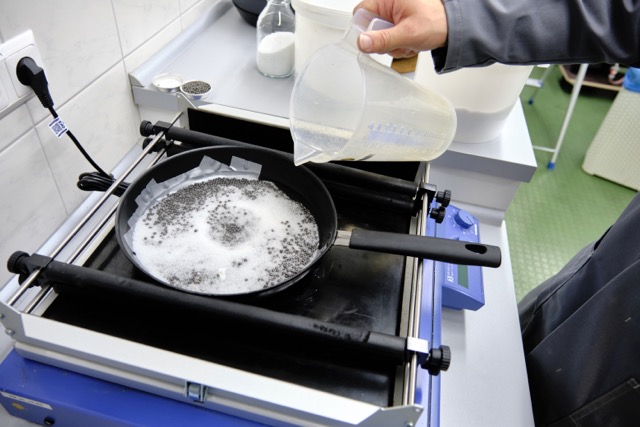
C. Non-stick Properties with Pancakes:
The frying pan's non-stick properties are tested for the four different sections after the wear test. A pancake is baked in the frying pan. When the top of the pancake is dry (fully cooked), the frying pan is turned upside down, and the non-stick properties are assessed for the different sections.
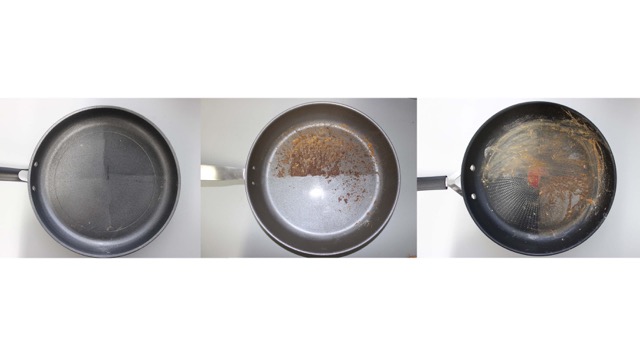
D. Non-stick Properties with 3.5% Fat Milk:
The frying pan's non-stick properties are tested for the four different sections after the wear test. The bottom of the frying pan is covered with milk, which is boiled until only solid residues remain (all water boiled off). Then, the milk residues are removed with a wooden spoon, and the non-stick properties are assessed for the different sections.
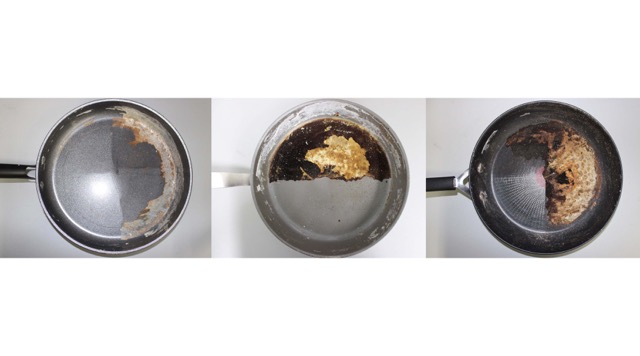
E. Base's Stability during Rapid Temperature Changes:
The frying pan is exposed to 40 thermal shocks (from hot to cold), and after each exposure, the change in the flatness of the base is measured (how well the frying pan sits against a flat surface).
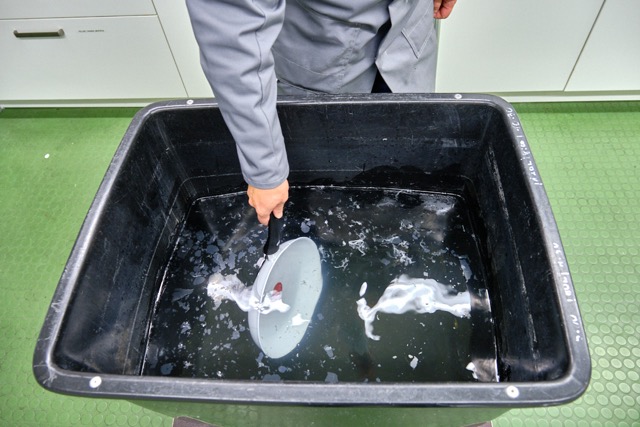
F. General Assessment of Construction Quality:
Assessment of the base, handle, handle transition, and sharp edges.
G. Heat Dispersion (Melted Sugar):
The frying pan's surface is covered with fine sugar and heated up. The melting time for the entire surface is measured, as well as the temperature at the first melting point, which must not exceed 290°C.
H. Temperature Distribution (Thermal Camera):
The frying pan is placed on an aluminum block at a temperature of 350°C and heated until the midpoint reaches 200°C. At the target temperature, a photo is taken with a thermal camera to document the temperature distribution across the surface.
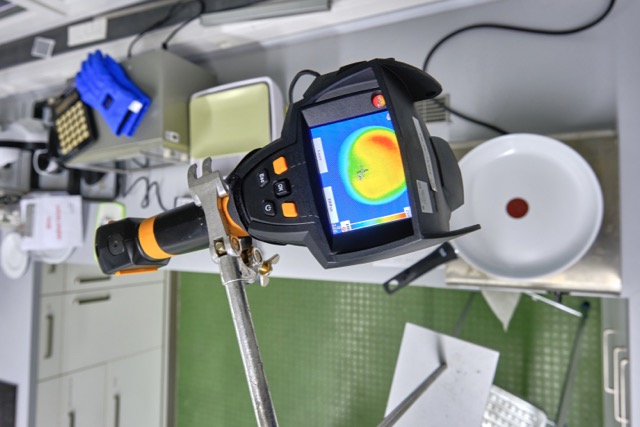
I. Heat Retaining Ability:
One liter of sunflower oil is heated to 200°C in the frying pan. When the target temperature is reached, the frying pan is placed on a wooden board, and the cooling time to 175°C, 150°C, and 120°C is measured.
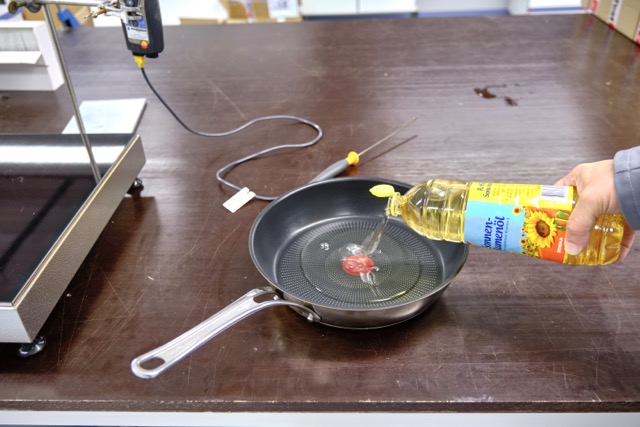
The results of the various test stages are interpreted and graded in consultation with the laboratory. In the overall grade, the grades for the different stages are weighted together as follows:
• Coating's durability (B, C & D) 40%
• Heat properties (G, H & I) 40%
• Construction quality (E & F) 20%
